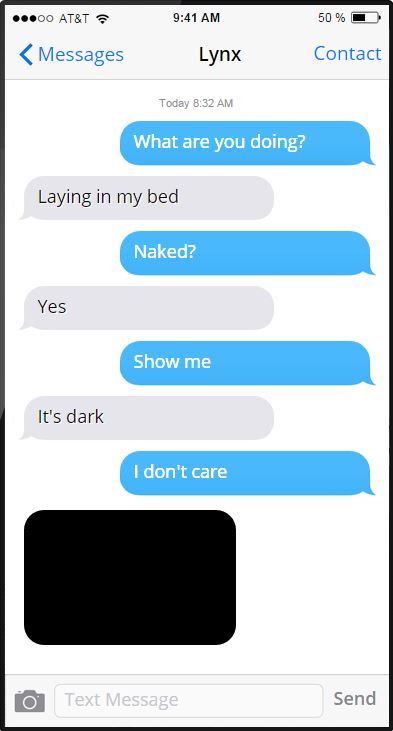Today’s owner of an average connected device is able to document his or her life and share it with anyone, anywhere. Sharing has become so easy that we rarely have second thoughts whether certain information is worth sharing; we trust the service entirely. We upload tons of photos from a recent vacation, publish angry/excited updates on things we find interesting and important, and share most intimate stories with our new online vis-a-vis, let alone real-life acquaintances.
However, the Internet is not a safe harbor, where you can keep your personal data, secrets, or media archive safe. The fact that people don’t understand this simple truth is a problem of a gigantic scale.
In this article, we’ll cover one of the ‘genres’ of online interaction – sexting. It might have serious consequences one should never underestimate.
What is sexting?
‘Sexting’ as a definition has been around since 2005. It’s obviously derived from ‘sex’ and ‘texting’ and presupposes sharing intimate data, whether in the form of text messages, photos or videos.
Currently available technologies made sexting an effort-free leisure. The only thing one needs to do is snap a picture and send it in one tap via instant messaging apps (WhatsApp, Viber, Snapchat, Skype and the likes of those), personal messages on social networks, or basically by any means of sharing.
Who needs that?
In order to comprehend the scale of this phenomenon, go to any social network and type ‘sexting’ in the search box. It’s even paradoxical: some parents are, predictably, shocked by the fact their kids are absolutely fine sending nude pictures to their boyfriends/girlfriends, and at the same time many adults would share their own nude photos with random people, without a second thought. The media frequently publish stories on people who tried sexting and lost.
According to Sex and tech, a recent research conducted in 2015 by The National Campaign to Prevent Teen and Unplanned Pregnancy, 39% of teenagers (people aged 13-19 years old) and 59% of young people (aged 20-26 years old) sent text messages of sexual content. 48% of teenagers and 64% of young people admitted receiving such messages at least on one occasion.
The respondents also admitted that sexting took place not even between them and their partner, but with their ‘crush’ (21% of girls and young women, 39% of teens and 13% of young men). What is even worse, 15% of teens and 13% of young people sexted with people they got to know only online and never met in real life. It’s worth noting that the stats on young people aged 20-26 years old is not much different from the stats on teens.

With that in mind, 75% of teens and 71% of young people acknowledge sexting might have serious consequences. Curiously, teens are even more aware of it than their older counterparts are. However, this knowledge never stops either of them.
How bad could it be?
The danger of sexting is explained simply: private pictures, video and text might once lose their privacy. Today’s communication channels enable quick sharing but defy any control on the data as soon as it’s been shared. Intimate content might become public in many situations like the ones below:
- A recipient of sensitive photos might share it on public channels, both inadvertently and on purpose
- An adversary might gain access to cloud storage the smartphone content is automatically syncing to
- A device might be stolen or lost in a public place and then used by an outsider
- Attackers might hack the victim’s account in the messaging app and access a folder with private photos
The victim will not necessarily know immediately that their private photos leaked online. The photos might resurface years after they were taken. Once they find way to the Internet, the consequences might be pretty serious. First, the compromised content might be used for blackmailing, regardless of the age: both teens and adults have reasons to keep those photos hidden from someone, whatever the cost. So, the blackmailers might threaten to share the pictures specifically with those people who should not know by all means. This should be taken into account even when someone shares nude photos with his husband or wife.
If private photos are compromised, they might find way to porn websites and resurface there. It might both damage the victim’s online image and create serious problems in real life. Once relatives or colleagues see the person’s nude photos on the porn site, the impact is hard to estimate.
One nasty consequence of compromising intimate shots is cyber-bullying, which became a notorious threat in the teenage society. If a teen’s nude photo is circulated among the peers or is found on a porn site, it might have the victim taunted, bullied or even lead to suicide. In order to understand the scale of the problem, we’d recommend to watch Sexting in suburbia and two different movies called Cyberbully (released in 2011 and 2015).
A truly dreadful story depicting the consequences of sexting is the case of Amanda Todd. An Internet acquaintance lured her into baring her breasts onto the camera, and then made compromising screenshots to terrorize and torment her on numerous occasions. The pictures were sent to all of Amanda’s friends and schoolmates, forcing her family to move, which, unfortunately, did not help. Unable to cope with daily bullying, Amanda committed suicide.
Parents should also understand consequences of sexting and explain to their children that it might endanger their reputation, relationship and even life.

Simple steps…
…to prevent consequences of sexting
- To shield your child from potential disaster, establish the following DON’Ts:
- DON’T send intimate photos to strangers, even if they insist (10% of teenagers admitted they were forced to send compromising images)
- DON’T use sexting to attract your crush (if she or he doesn’t care about you, they might share your picture with friends and classmates just for fun)
- DON’T send nude photos or sexts as a joke. By all means it’s NOT a joke!
- DON’T try to get an influx of ‘likes’ by posting a compromising photo on a social network page. There will always be haters who would you use it against you.
- DON’T send your nude picture in exchange. If you care about a person, you must warn them about consequences and ask to delete picture from all device it was synced to. If you are afraid to offend a person who asks your private photos, try to turn it into a joke.

…If private photos went public
Even if it has already happened, it’s crucial to prevent such situations in the future, so follow the aforementioned recommendations to minimize the impact.
- If the victim is your child, do you best to make them understand it’s not the end of the world. Never punish them – quite the opposite, try to understand it’s not their fault. It is the moment when they need you the most.
- If those pictures or videos were published on the social networks, don’t comment them – this way you’d attract even more attention and ‘feed’ the Internet trolls.
- You can level the negative consequences by posting positive updates and ignoring all attempts to remind you about the incident.
- Regardless of the platform the compromising photos were published (whether a social network or a porn website), contact the administration of the resource and report that your personal information (photos, videos, correspondence) was published without your consent. In this case, the administration has to delete this information.
- If none of the above helps, seek attorney help and study your country’s legislation on ‘protection of personal data’ and ‘unlawful pornography distribution’. Many countries apply severe laws to prosecute those distributing ‘child pornography’.
Legislation
In the US, anyone who stores or distributes sexual content involving a juvenile (even if it was received via sexting), violates the law on child pornography and will be prosecuted regardless of the age. Some consider this law too strict, so 20 states have their own sexting laws. Further information is available here: http://cyberbullying.org/state-sexting-laws.pdf
There are no dedicated sexting laws in UK or Germany, but both countries’ legislators consider erotic picture of an underage person child pornography. In UK, even juveniles who distribute such content are prosecuted.
In many countries, people can go to jail even for storing sexual images of underage individuals, let alone creating or distributing them.
Conclusion
Sexting is a widespread and dangerous phenomenon, which might have dreadful consequences for both teenagers and adult people. Do always remember: today’s means of communication never guarantee security of your data.
There is a ton of Internet memes and pictures with examples of sexting fails, tips to achieve a guru level in sexting and even articles on how to sext ‘securely and privately’. The truth is sexting cannot be ‘secure’ and ‘private’ by design. First, person on the photo, even if he hides his face, can be identified by birthmarks, tattoos, or scars. A person’s identity can be revealed with help of various details on the photo: interiors, backgrounds, or mirrors. Second, the photo’s metadata might include certain information on the owner, the date of the footage, and even the camera’s serial number. It might be enough to identify the owner of the device. Third, with the current pace of tech development, there is no guarantee we won’t have a special ‘anti-blurring’ software soon which would help to return blurred photos to their initial state.
With that in mind, there best advice is: DON’T make intimate pictures at all! No content, no problem. Please explain to your kids that going online is just like going outside. Would they go outside naked? Let them answer this questions themselves. This analogy might help them to answer another question: Is it ok to sext?
 Kids Safety
Kids Safety


